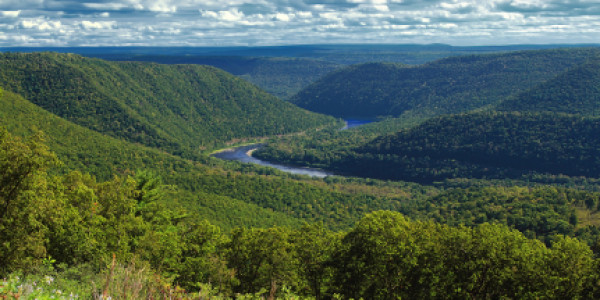by s.e. smith May 31, 2013 Does the thought of shipping wood products from the US to the UK for burning in biomass power plants, a process that produces more emission than using coal for energy, make you scratch your head? How about if that same process is considered in line with the European Union’s standards on “renewable energy”? Roger Harrabin at the BBC just reported that this is exactly what power companies in the United Kingdom are doing, following the letter of the law without embracing its spirit, and devastating the beautiful forests of America’s Southeast in the process. The story of how and why this is happening provides a fascinating glimpse into the failings of environmental regulation, in addition to the bizarre contortions companies will use when it comes to keeping costs down at the cost of the environment. Let’s start with the how, which begins with Plum Creek, a major timber corporation in Georgia with substantial holdings in the region. Much of its land is cultivated in managed plantations, consisting of rows of densely packed trees encouraged to grow as straight as possible to produce straight, even boards, those with the highest value. These forests lack groundcover and habitat, and thus don’t provide a home for other plants and animals; they are effectively a gap in the environment. When the trees are thinned, the unwanted timber is processed into pulp, wood pellets and other products. Some of this unwanted timber makes its way to the UK, where it’s used by power plants like those maintained by Drax, a major energy company. At first glance, using biomass for power might make sense. It’s a theoretically renewable resource if managed properly, for example, because plants grow back and sequester carbon in the process. Many UK power plants are switching over or thinking about adopting it, making it a topic of discussion in the region. The truth is that biomass electricity generation is more complicated than meets the eye . Biomass can come from a number of sources, and there are important considerations when it comes to where it comes from, how it’s transported and how it’s handled. Unwanted timber products might sound like a good source of biomass, but that shifts when the larger picture becomes apparent. The plantations that timber comes from harm the environment, and as demand rises, more native forests and farmland may be taken over for tree plantations, which is not desirable. Furthermore, native timber forests are also being felled to satisfy the demand for biomass. And it can take half a century or more for trees to regrow and sequester an equivalent amount of carbon to what is burned. That might be good in the long term, but it doesn’t resolve the short term CO2 crisis. Environmentally speaking, the transportation costs can be immense. Timber products don’t magically make their way from Georgia to the hoppers of power plants: they need to be processed and moved between a number of locations along the way. At each stage, pollution is added to the chain, and the offset of planting more biomass may not make up for it. Thanks to subsidies, new environmental regulations and other measures intended to green power production, biomass is enjoying a spot in the sun, but it might not be deserved. In fact, the harms associated with it are a critical consideration that’s being eclipsed in some regions by the urgent need to comply with new regulations, and the desire to access subsidies. In a strange twist, subsidies in the UK are paying for the destruction of US forests, and this is being labeled as environmentally friendly! While biomass really does have tremendous potential, this case clearly illustrates that tighter regulations are required to ensure that at the same time fuel from renewable sources is promoted, those sources are carefully audited and evaluated to ensure they’re used responsibly. With the right framework, it should be possible to use biomass responsibly, and responsible uses definitely don’t include getting credits for shipping trees from the US to burn in UK power generation facilities. Read more: http://www.care2.com…l#ixzz2VRp9TPBE Taylor Scott International
Why are US Forests Fueling UK Power Stations?

This entry was posted in Investment, investments, News, Property, Taylor Scott International, TSI, Uk and tagged beautiful, environment, european, investment, investments, javascript, news, property, stations, transportation. Bookmark the permalink.







